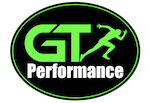A deep dive on eating like an athlete
There is no one “right” diet. But, if you’re trying to reach your athletic ceiling, there sure are wrong ones.
I get asked all the time “what should my athlete’s diet look like?”
The best answer is, “it depends” and that we should take a deep dive with 1 on 1 nutrition coaching. However, that’s not always possible.
So, here are 6 takeaways that you can start to put in action today.
1) Eat protein at every meal
The easiest win that you can get is to center each of your meals around a protein source. Protein is the building block of muscle (and so much more).
Experts tell us you need between 0.55-0.91 grams of protein per pound of bodyweight. So, if you weighed 200 lbs, you would need between 110-182g of protein per day.
The more intense your training is (frequent practices, intense lifting sessions, etc.) the higher in that range you should be.
2) Shift from more to less processed
The more your food resembles its natural state, the better off you’ll be.
3) Eat throughout the day: 5-7 meals per day
Your athlete’s body needs constant fuel. Frequent meals spaced throughout the day are more ideal than cramming all of their calories into a 6-hour window.
Here’s what that could look like.
4) Hydrate
Drink water throughout the day (and drink a lot of it). Precision Nutrition recommends to: “consume at least 3 liters (101 ounces) of fluid on the days that you exercise.”
That’s equal to 6 regular sized plastic water bottles.
Only use sports drinks (Gatorade, Powerade, etc.) during really, really intense practices/games.
Get rid of soft drinks. (Okay, you don’t have to get rid of them entirely. Just think of them as a “dessert” not a staple in your diet.)
5) Ownership and planning
This isn’t going to happen accidentally. If your athlete is reactive with nutrition, they’ll either go without food or grab junk from vending machines and fast food restaurants.
Your athlete needs to plan out meals in advance.
Teach them how to cook. Teach them how to measure out food. Teach them how to use a food scale. Teach them how to log their intake.
Those are skills that set them up for success for the rest of their life.
6) Supplement?
I get asked all the time about supplements, so I have to mention them in this article.
I’m mostly anti-supplement. Most of the stuff on the market is snake oil.
However, there are 3 supplements that just about every high school athlete should take. They’re safe, effective, and really well researched.
1) Protein powder. (100% whey isolate is what people normally do best with.)
2) Creatine. I wrote in-depth about this here.
3) Multi-vitamin.
Obviously, consult with your registered dietician or physician before taking any supplements.
A quick thought on modeling
The most effective way to change your athlete’s health and eating habits is to change yours.
If you want to change their life, you must first change yours.
More from me…
- 2024 is geared toward pumping out more educational content on social media. Follow me on Instagram @gtperformance_ to learn all about athlete development.
- If you think this newsletter doesn’t suck (or maybe you even enjoy reading it), I would really appreciate you sharing it with some other parents that might benefit from reading it. You can just send them to gtperformance.co and they can subscribe there!
- Everything in these newsletters and on our website is for educational purposes only and should not be taken as medical advice for you or you athlete. Consult directly with a healthcare professional.
Thanks so much for your help in spreading the word about athlete development!
Be >,
Zach
Dr. Zach Guiser, PT, DPT, CSCS
